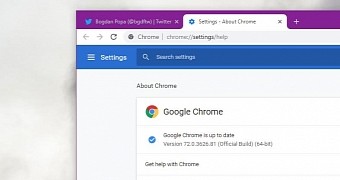It’s not a secret that despite being the world’s number one desktop browser, Google Chrome is a major resource hog, eating up way too much memory regardless of the platform you run it on.
But as it turns out, Google has heard all the criticism, so the company is now developing new ways to optimize resource usage in Chrome.
As discovered by ChromeStory, the search giant is currently exploring an improvement called “Best Effort Tasks,” which essentially comes down to a new feature that would keep certain tasks on hold until the browser is closed.
A code commit discovered by the cited source notes that “writing user data to disk, cleaning caches, reporting metrics or updating components” could only be allowed when the browser is closed, which in turns means that the application would require fewer resources during a typical browsing session.
Resource usage optimizations
By the looks of things, what Google wants to do is to delay all low-priority tasks in Chrome browser, and a flag description offers a few more details.
“With this flag on, tasks of the lowest priority will not be executed until shutdown. The queue of low priority tasks can increase memory usage. Also, while it should be possible to use Chrome almost normally with this flag, it is expected that some non-visible operations such as writing user data to disk, cleaning caches, reporting metrics or updating components won’t be performed until shutdown.”
At this point, these optimizations are still in their early days and there’s no confirmation Google would go forward with such tweaks.
But it goes without saying that reducing the memory usage of Google Chrome would be a Godsend, especially because so many people use it every day. According to third-party data, Google Chrome is getting closer to 70 percent market share on the desktop, so nearly 7 in 10 PCs out there are currently running Google’s app regardless of the native browser they shipped with.

 14 DAY TRIAL //
14 DAY TRIAL //